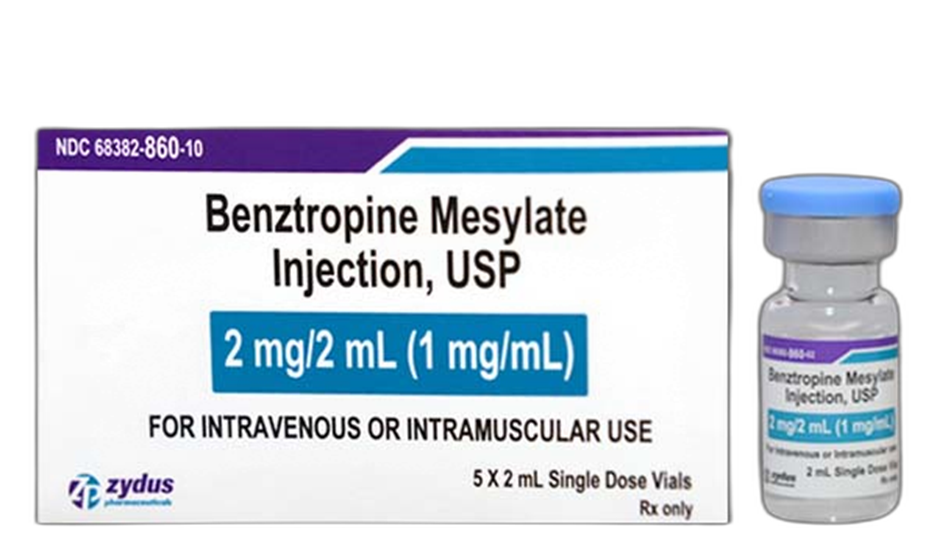A client with psychosis who is receiving an antipsychotic medication is continually rubbing the back of the neck. Which nursing intervention is best for the nurse to implement?
Provide the client a heating pad to place on the neck.
Obtain a prescription for physical therapy services.
Give a PRN prescription for benztropine.
Obtain an extra pillow for the client to use at night.
The Correct Answer is C
Choice A reason: Providing a heating pad to the client may provide some temporary relief, but it does not address the underlying cause of the neck discomfort, which is likely due to extrapyramidal side effects (EPS) of the antipsychotic medication.
Choice B reason: Obtaining a prescription for physical therapy services may be beneficial for the client's overall health and well-being, but it is not the best intervention for the acute problem of neck discomfort. Physical therapy may also require a referral and a waiting period, which would delay the relief for the client.
Choice C reason: Giving a PRN prescription for benztropine is the best intervention for the nurse to implement, as benztropine is an anticholinergic medication that can counteract the EPS of the antipsychotic medication. Benztropine can reduce the muscle stiffness and spasms that cause the neck discomfort.

Choice D reason: Obtaining an extra pillow for the client to use at night may help the client sleep better, but it does not address the neck discomfort during the day. It also does not treat the EPS of the antipsychotic medication, which may worsen over time.
Nursing Test Bank
Naxlex Comprehensive Predictor Exams
Related Questions
Correct Answer is D
Explanation
Choice A reason: Assessing for orthostatic hypotension is not a priority action before administering labetalol. Orthostatic hypotension is a possible side effect of the drug, but it is not an immediate concern.
Choice B reason: Administering the dose and monitoring the client's BP regularly is not the best action. The client's heart rate is below the normal range of 60 to 100 beats/minute, which indicates bradycardia. Labetalol can further lower the heart rate and cause cardiac complications.
Choice C reason: Applying a telemetry monitor before administering the dose is not necessary. Telemetry monitoring is used to detect cardiac arrhythmias, which are not a common adverse effect of labetalol. The client's heart rate and rhythm should be assessed by auscultation.
Choice D reason: Withholding the scheduled dose and notifying the health care provider is the correct action. The client's heart rate is too low to safely receive labetalol, which is a beta-blocker that can decrease the heart rate and contractility. The health care provider should be informed of the client's vital signs and the need to adjust the medication dosage or frequency.
Correct Answer is C
Explanation
Choice A reason: Performing a bladder scan is not the most relevant intervention for monitoring an adverse reaction to tamsulosin. A bladder scan is a non-invasive test that measures the amount of urine in the bladder. It can be used to assess urinary retention, which is a common symptom of benign prostatic hyperplasia. Tamsulosin is a medication that relaxes the smooth muscle of the prostate and bladder neck, which can improve urine flow and reduce urinary retention. However, a bladder scan does not indicate how the medication is affecting the client's blood pressure, which is a more serious concern.
Choice B reason: Assessing urine output is not the most relevant intervention for monitoring an adverse reaction to tamsulosin. Urine output is the amount of urine produced by the kidneys and excreted by the bladder. It can be used to evaluate the client's fluid balance and kidney function. Tamsulosin is a medication that can improve urine flow and reduce urinary retention in clients with benign prostatic hyperplasia. However, urine output does not indicate how the medication is affecting the client's blood pressure, which is a more serious concern.
Choice C reason: Measuring blood pressure is the most relevant intervention for monitoring an adverse reaction to tamsulosin. Blood pressure is the force of blood against the walls of the arteries. It can be affected by various factors, such as heart rate, blood volume, and vascular resistance. Tamsulosin is a medication that belongs to the class of alpha-blockers, which can lower blood pressure by dilating the blood vessels. This can cause side effects such as dizziness, fainting, and orthostatic hypotension, which is a sudden drop in blood pressure when changing positions. The nurse should measure the client's blood pressure regularly and report any abnormal findings to the healthcare provider.
Choice D reason: Monitoring daily weights is not the most relevant intervention for monitoring an adverse reaction to tamsulosin. Daily weights are a measure of the client's body mass, which can reflect changes in fluid status and nutritional intake. Tamsulosin is a medication that can improve urine flow and reduce urinary retention in clients with benign prostatic hyperplasia. However, daily weights do not indicate how the medication is affecting the client's blood pressure, which is a more serious concern.
Whether you are a student looking to ace your exams or a practicing nurse seeking to enhance your expertise , our nursing education contents will empower you with the confidence and competence to make a difference in the lives of patients and become a respected leader in the healthcare field.
Visit Naxlex, invest in your future and unlock endless possibilities with our unparalleled nursing education contents today
Report Wrong Answer on the Current Question
Do you disagree with the answer? If yes, what is your expected answer? Explain.
Kindly be descriptive with the issue you are facing.
